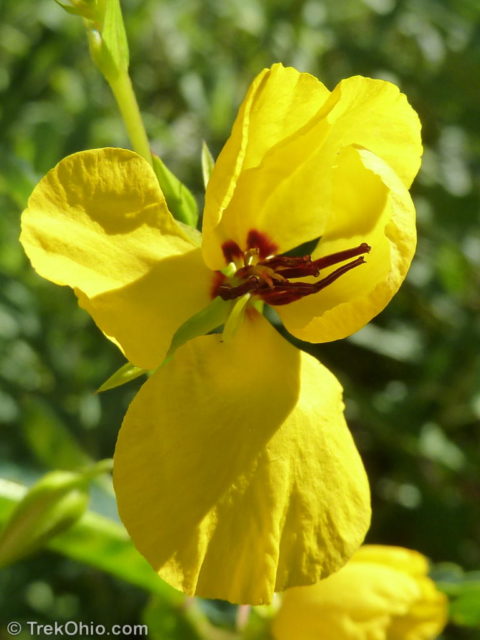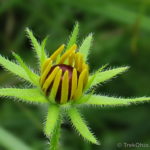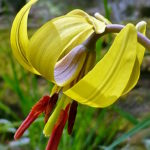
(Chamaecrista fasciculata).
While I was at Gahanna Woods, I spotted these partridge peas growing in the meadow. They are native to the eastern United States, growing up to 3 feet (1 meter) tall. Their leaves are compound with each leaf having five to eighteen pairs of leaflets. Although I have heard of flowers that fold up their blossoms at night, the partridge pea is somewhat different in that it folds up its leaves at night. Each of the plant’s yellow flowers has five petals with the bottom petal being longer than the rest. The top four petals (the short ones) have a small, dark red area near their base. Each flower has four yellow anthers and six dark red anthers.


It is an annual plant that contains both male and female reproductive structures. With sufficient rain it will flower from early summer to first frost. When the seeds are mature, the pod completely splits oven to release them. The flower is only pollinated by bees, and some bee keepers cultivate partridge pea as a basis for honey production. Birds like to eat the seeds, and deer will munch on the entire plant.
Partridge pea easily establishes itself on land whose vegetation has been burnt or dug up, so it’s roots are helpful in keeping this disturbed soil from eroding. Like other legumes, it is a nitrogen-fixing plant that improves the soil’s quality.
Additional information
- Chamaecrista fasciculata, published at Wikipedia
- Chamaecrista fasciculata (Partridge Pea), published by the Lady Bird Johnson Wildflower Center of the University of Texas
- Wildflowers Of Tennessee, The Ohio Valley and the Southern Appalachians, a book authored by Dennis Horn and Tavia Cathcart (link to Amazon using our affiliate referral)
More on Wildflowers




Fascinating! I had no idea — such a helpful and lovely plant!